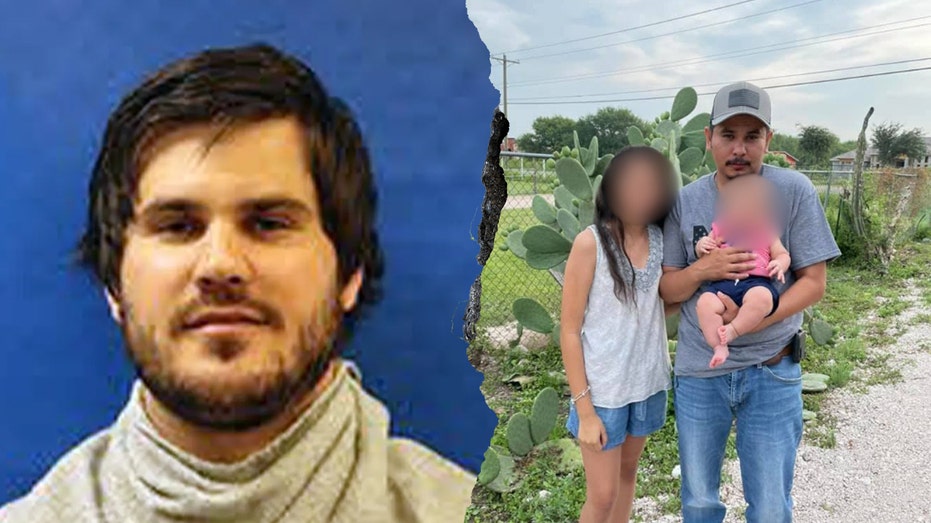Famine Haunts the People of Gaza. Israel Is Trying to Convince You It’s Fake.
Israeli extremist officials deny the existence of famine in Gaza as they push for harsher measures to block food. The post Famine Haunts the People of Gaza. Israel Is Trying to Convince You It’s Fake. appeared first on The Intercept.


As a survivor of Israel’s genocidal war on Gaza, it breaks me to watch my people struggle to find something to fill their stomachs.
Israel’s deliberate policy of starvation continues to tighten its grip on the enclave. Humanitarian organizations have sounded the alarm, warning that Gaza is on the verge of full-scale famine.
Since Israel shattered the ceasefire on March 18 and sealed its blockade, 2.1 million Palestinians in Gaza have been cut off from essential food and aid. As the World Food Programme and UNRWA have recently announced that their stocks of flour and food are depleted, the risk of widespread starvation grows with each passing day.
I lived through the first wave of starvation in Gaza in the early months of 2024, a time when Israeli-imposed aid restrictions drove hunger to catastrophic levels. Everyone across the Strip experienced severe food shortages, with empty plates becoming a daily scene. I was forced to leave Gaza alone in February 2024 and flee to Egypt, after nearly five months of relentless bombardment and siege. At the height of the famine, I lost 16 kilograms.
Since then, I have devoted myself to fighting against Israeli propaganda, narratives that distort the truth, downplay Palestinian suffering, and mock the agony Gazans endure.
While I investigate Israeli disinformation, I carry the emotional weight of seeing the pain of my family still trapped in Gaza. Like nearly every household there, my family is running out of food and flour. Each video call painfully reveals their shrinking bodies, thinned by hunger.
A study conducted in late December 2024 found that the average person in Gaza has lost around 18 kilograms due to severe food insecurity during the war. The situation has only worsened since.
Israel’s Weaponization of Famine
The Israeli blockade that began on March 2 has driven food prices beyond reach. My father told me last week that a 25-kilogram bag of flour now costs around 200 U.S. dollars. This week, the price has climbed to $470.
I have seen videos of families grinding pasta and lentils to make makeshift bread for their starving children after running out of flour. For many, lentil bread is not a choice but a last resort under a starvation diet imposed by the Israeli occupation.
After my family returned to our bombed-out home in the northern Gaza Strip in January of this year, my brother Fahmy built a makeshift oven fueled by firewood to bake bread for our family and neighbors. With all major bakeries shut down due to the flour shortage, his small act of resistance became a vital lifeline.
Fahmy has been baking for over a month, helping those around him. He told me last week, “Fewer people come because flour is no longer available. Those who still do often bring bug-infested flour, the only thing they have left to feed their children.”
With food increasingly scarce in Gaza, much of the population now depends on tekias — community kitchens — for a single daily meal. These tekias, often limited to serving plain lentils, pasta, or rice, have had to reduce portions due to Israel’s blockade on food and cooking gas.
Amjad Al-Shawa, director of the Palestinian Non-Governmental Organizations Network, has warned that many tekias are on the brink of shutting down as food supplies dwindle.
I watch daily footage of people queuing and stampeding, and children crying, to receive a small meal. These heartbreaking scenes are undeniable evidence of Israel’s weaponization of starvation.
Even these few vital tekias have not been spared from Israeli attacks. Gaza’s Government Media Office reported that the Israeli military has targeted and bombed 29 tekias since the war began.
Many Palestinians in Gaza have been forced to eat any animal they can find to get some protein. Shocking videos, verified by myself and my colleagues in the press, show people consuming sea turtles, horses, and even hedgehogs to survive.
A story that deeply moved me was that of a child, Omar Qannan, who said he had eaten turtle meat despite his love for Raphael, the superhero from “Teenage Mutant Ninja Turtles.”
It is devastating to imagine how Omar will ever watch his favorite cartoon character again without remembering that hunger once forced him to eat an animal he saw as a heroic friend.
Fact-Checking Israeli Hasbara
Israeli trolls have waged an intensive hasbara, or propaganda, campaign to deny the famine ravaging Gaza, even at its peak in February 2024. These denials persist, despite repeated warnings from international organizations that Gaza is edging closer to famine and the evidence in front of our eyes.
On April 20, an X user, notorious for spreading Israeli propaganda, posted a video of a man sitting by the beach in Gaza, alleging he was enjoying a “large kebab meal” during the crisis. The user intentionally skipped the fact that the man was eating horse meat.
Another post stunned me: It came from “Gazawood,” a systematic campaign aiming to mock, discredit, and deny Palestinian suffering. The video showed a woman in Gaza grinding pasta to bake bread for her children. The Israeli propagandist accused the woman of staging her story for the camera instead of trying to feed her starving family.
On May 12, 2024, I debunked a viral video intending to discredit the case of Fadi al-Zant, a child from Gaza who was suffering from malnutrition before fleeing the Strip for urgent medical treatment.
Trolls cruelly accused his mother of deliberately starving him to stage a “Pallywood” scene. Some atrocity denials weaponized her appearance to cast doubt on her child’s suffering.
These malicious insinuations ignore the basic truth that children are especially vulnerable during famine. Their bodies weaken more rapidly and face a significantly higher risk of death in hunger crises, as stated by the International Rescue Committee.
The United Nations reported nearly 3,700 children were diagnosed with severe malnutrition last month alone, an 82 percent rise since February.
Recent videos of severely malnourished children, like baby Siwar Ashour and 12-year-old Rahaf Ayad, continue to haunt me.
Without urgent medical evacuation, these children may not survive. Without immediate and sustained delivery of food and aid, more children will fall victim to hunger and face the lifelong health consequences of starvation.
Israeli officials are lying to our faces. On July 24, 2024, Prime Minister Benjamin Netanyahu stood before the U.S. Congress and refuted Israel’s role in obstructing humanitarian aid to Gaza. Despite being riddled with misleading claims, his speech drew applause from U.S. lawmakers who chose to overlook the catastrophic humanitarian crisis unfolding in Gaza.
I have tracked several organizations affiliated with the Israeli government that have actively spread fake news and hate speech during the war.
Among them is HonestReporting, a hasbara group claiming to be a media watchdog exposing anti-Israel bias.
The group worked to deny the famine in Gaza and undermine the credibility of independent experts. It dismissed the findings of the Integrated Food Security Phase Classification report, which warned that famine in Gaza was imminent by mid-March 2024. Rather than presenting the evidence, HonestReporting relied on cherry-picked evidence to discredit the report’s conclusions.
The Soft Language of Starvation
Israeli extremist officials have consistently denied the existence of famine among Palestinians in Gaza, while simultaneously pushing for harsher measures to block food and aid from reaching the besieged population.
Although international organizations have repeatedly warned about the imminent threat of famine, these officials have not stopped inciting hate speech and ignoring the suffering of Gaza’s population.
Israeli officials frame starvation and the blockade as strategic necessities.
Using soft language, Israeli officials frame starvation and the blockade as strategic necessities. On April 16, Israeli Defense Minister Israel Katz stated, “No humanitarian aid to enter Gaza,” to pressure ceasefire negotiations.
Around the same time, Finance Minister Bezalel Smotrich said, “Not a single grain of wheat will enter Gaza.”
National Security Minister Itamar Ben-Gvir went even further, recently calling for the Israeli forces to bomb food storage facilities in Gaza.
Starvation in Gaza has become yet another tool of death employed by Israel: its slowest and most agonizing weapon. It does not come with the sound of explosions; it silently erodes life day by day, further deepening an already dire humanitarian crisis.
Exhausted by the news and disillusioned by the endless cycle of broken ceasefire promises, my family in Gaza now turns to me for updates.
My role has shifted to one of constant reassurance. I tell them what they want to hear — that the border crossings will soon open and hundreds of trucks carrying vital supplies, including food and flour, are on their way. Yet, deep down, I know that the situation remains grim. Each day without aid arriving in Gaza pushes more families to the brink of death.
The post Famine Haunts the People of Gaza. Israel Is Trying to Convince You It’s Fake. appeared first on The Intercept.














































































